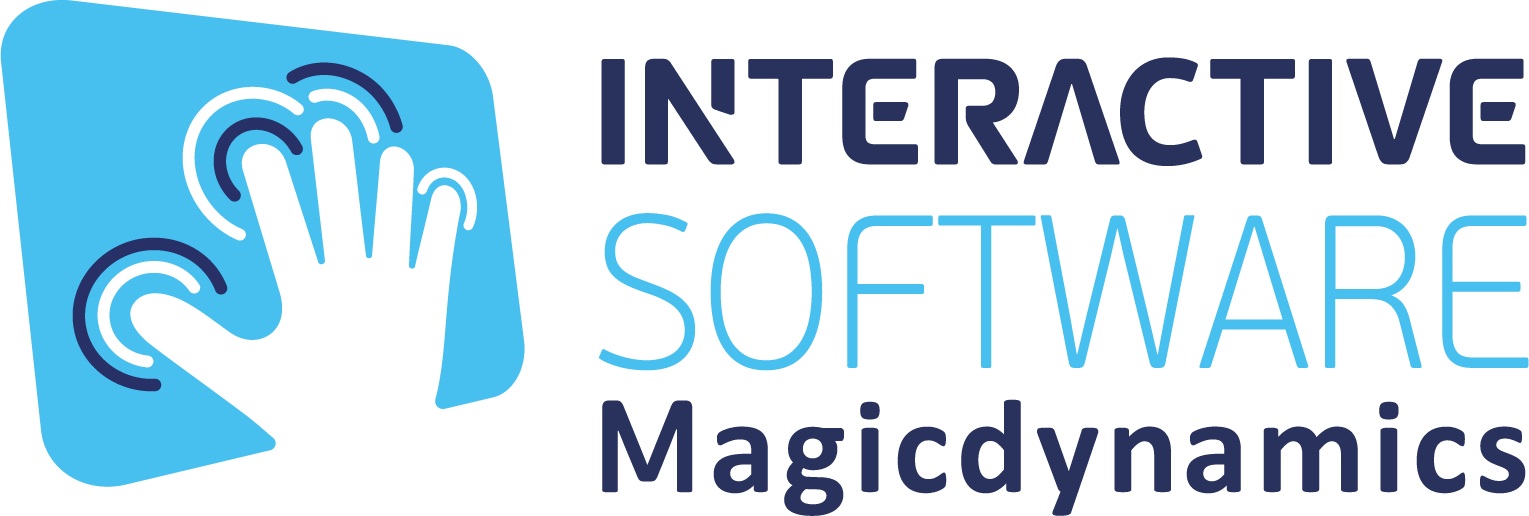Any projector that can be connected to a computer will work with our software, but to pick the best one for your space and installation type, it helps to know a few things about projectors.
Lighting Requirements
Projectors work best in areas without direct sunlight or directional lighting. If you plan to use a projector for your installation, the area should be as evenly lit with ambient lighting as possible. Avoid installing near outdoor windows.
Floor or Wall Surface
Any smooth, light colored surface will work for most projectors. For best results, we recommend using matt white (gloss-free) vinyl, paint, or similar. If you're looking for a high reflectivity paint designed specifically for wall and theatre projection, Rosebrand's Screen Goo product line works very well.
Aspect Ratio
The Aspect Ratio of a projector represents the size relation between the width and height of the display. The most common aspect ratio for projectors is 16:9, 16:10 or 4:3. Our games are created to be displayed at 16:9. We can customize games for different aspect ratios if desired.
Throw Ratio
The Throw Ratio (often written TR) represents how big the image will be when the lens is a specific distance from the projection surface, e.g. 0.5:1 The first number is the distance from the lens to the projection surface, and the second number is the width of the image. So a 1:1 throw ratio would produce an image 1 meter wide, from a distance of 1 meter. To get a large image from a small distance, you should look for a throw ratio where the first number is 1 or less. Projectors that have shorter throw ratios are called 'Short Throw Projectors', and usually have a Throw Ratio ranging from 1 - 0.4.
Lens Calculator
There's a handy tool on Projector Central's website to help you quickly discover the total size of a projected image from any model of projector, and you can even search specifically for short throw projectors.
Lens Shift / Lens Displacement
The Lens Shift of your projector refers to the position of the image in relation to the lens. Many office and home projectors have a vertical displacement of 50% or more, meaning that the bottom of the image is lined up with the projector lens. Some projectors have an adjustable lens shift. It's important to know the lens shift of the projector you plan to use before you install it, since it will affect where you install the projector.
Lumens
Lumens refers to the brightness of the projector, and can be measured using several methods. This means that you can't always trust the lumen value provided by your projector manufacturer, particularly when purchasing an unknown brand. We recommend 3000-4000 lumens for small events and venues, and 4000-6000 lumens for retail spaces and tradeshows. You can find some recommended projectors in our shopping lists.
Keystone
Keystone is an adjustment method provided by most good projectors so that you can square your image in cases where the projector is as a slight angle. It is very common to find projectors with horizontal keystoning. Vertical keystoning is less common, but is extremely useful in commercial installations where the walls are not quite flat, or where the projector is mounted with a slight pitch.
The best option is 4 corner correction, which allows you to perfectly align the image with the screen.

















